Andirons: From Status Symbols to Style Markers
http://decor-ideas.org 07/02/2014 23:14 Decor Ideas
To James Gallagher, an antiques dealer in North Norwich, New York, a fireplace sans andirons looks naked. “Without them it appears to be a black hole,” he says. Gallagher’s view is understandable, as he’s been selling museum-quality fireplace fixtures through his business, Antique Andirons, for nearly 40 years. Look at these images and you may warm up to his way of thinking.
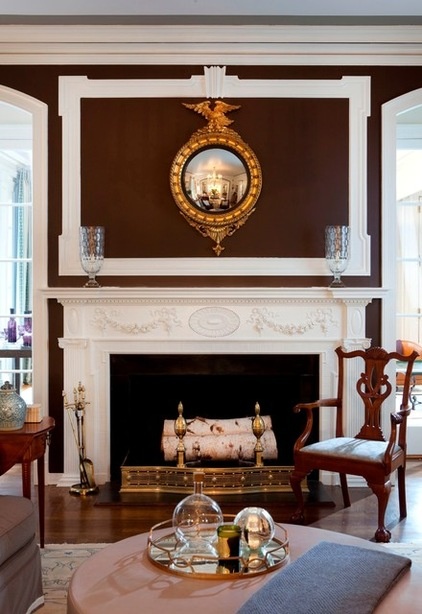
According to Gallagher, the earliest andirons — metal supports that hold burning wood in a fireplace — were simple affairs. “In early America people would go down to the blacksmith and ask him to bang out something to hold the wood,” he says. “But as the country’s wealth grew during colonial and federal times, they became grander.”
That grandeur is on display in a room designed by S.B. Long Interiors for the Governor’s Mansion in Connecticut.
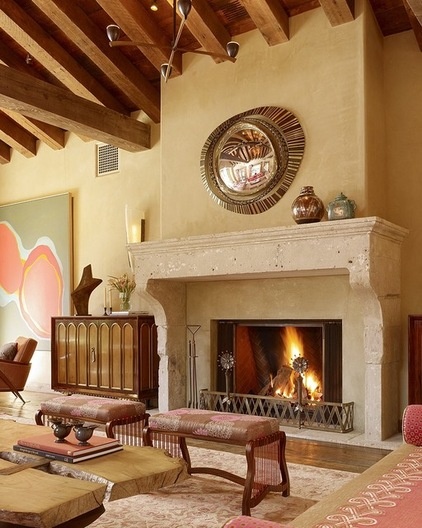
New independence and wealth had Americans dressing their homes with brass andirons, and brass foundries in New York, Boston and especially Philadelphia turned out elaborate pieces. “They were a room’s focal point and a status symbol for any household,” says Gallagher. “Remember, these were homes without electricity or central heat. There would have been a fireplace in nearly every room, and it was designed to radiate heat. The glow of the flames were amplified on the brass of the andirons.”
This modern home by Jay Jeffers Design Group with decorative pieces by Tuell and Reynolds shows how a fully outfitted fireplace can appear grand.
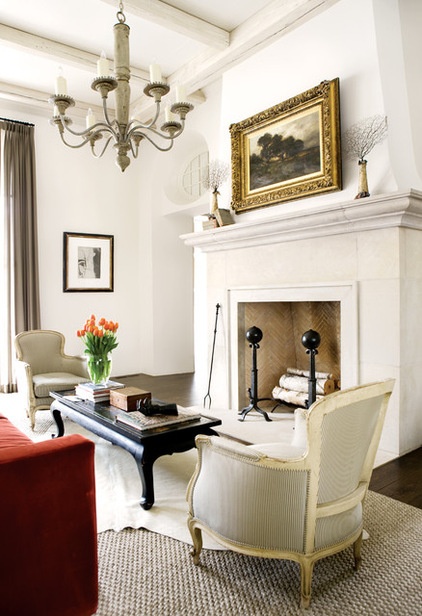
Status symbol aside, andirons have a practical role. By elevating wood, they create a draft that allows fires to start more quickly and burn better. Most andirons have the same basic components: a billet bar (the supports the firewood rests upon), log stops (small brackets on the billet bar that hold the wood in check) and decorative posts in front (usually made up of legs, a plinth and a finial). Gallagher says early fireplaces had deep hearths and no screens, so andirons kept burning logs securely in the fireplace.
The black shade of the andirons in this project, by Roma | Eco-Sustainable Building Technologies, eliminates the need to polish the andirons, a daily task in early America that was probably the bane of a servant’s existence.
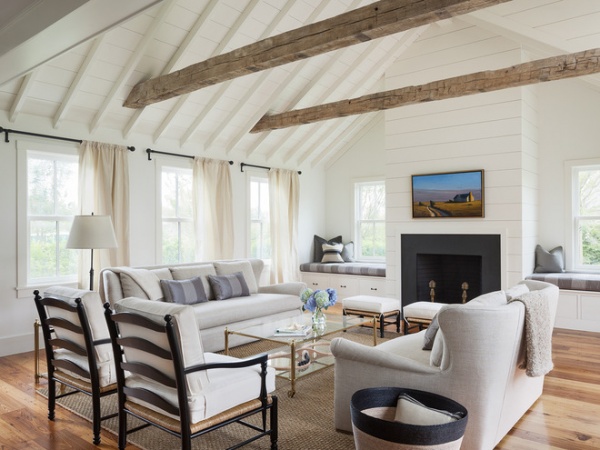
“You can see servants polishing andirons on shows like Downton Abbey,” says Gallagher. “Today you might not have a staff to do it, but many of my clients say polishing their andirons is a meditative experience.”
The andirons in this project, by Sophie Metz Design, show how a touch of brass can enliven a firebox.
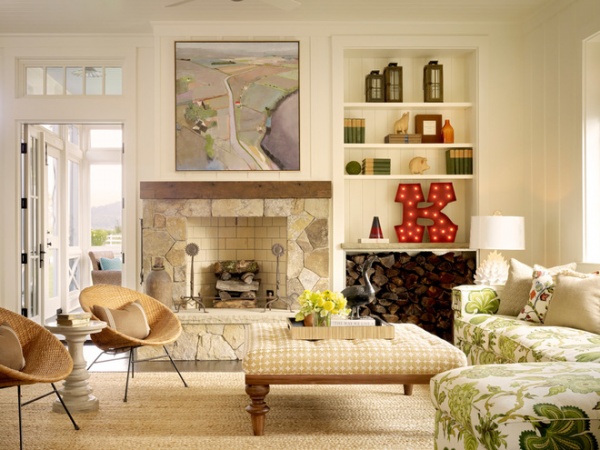
Since most of us don’t have a Mr. Carson or Mrs. Hughes to keep up exacting standards, embracing the tarnished look is always an option, as the owners of this home (by Total Concepts) appear to have done.
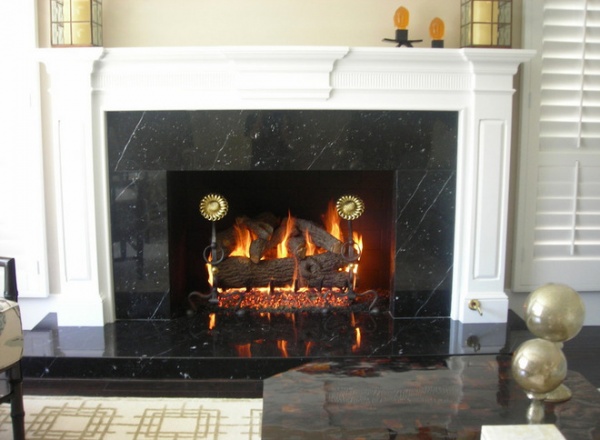
Gas fireplaces — such as this one, by Wilshire and Okell’s Fireplace Shops — also cut down on the polishing duties. “Old andirons can easily be adapted for gas fireplaces,” says Gallagher. “And whether you are using a wood or gas fireplace, you can easily make them work with fire screens.”
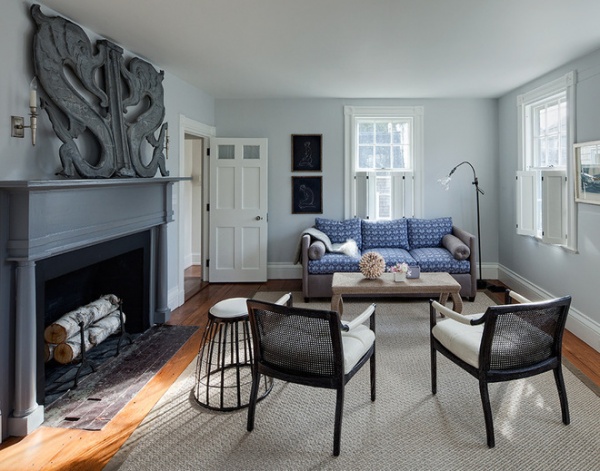
It should be noted that most of the photos here show wood and andiron combinations that are decorative — they’re simply dressing up an empty fireplace. When and if a match is struck, screens would likely be added. Until then they make a pleasing setting of what would otherwise be a gaping hole. An example is the pretty birch log and blackened andiron combo in the project here, by Buckingham Interiors.
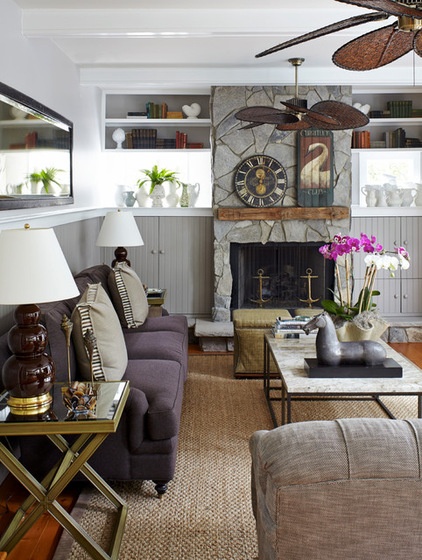
According to Gallagher, the introduction of central heat meant that fireplaces became fewer, smaller and more about atmosphere than survival. “Andirons became mass produced in the Industrial Age,” he says. “You started to see decorative andirons with whimsical shapes and motifs.”
An example is this pair of anchors that give a nautical flavor to a Jules Duffy Designs project.
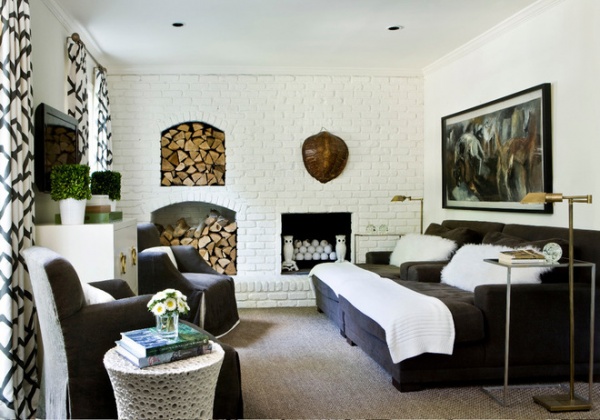
Another popular option in the 1920s was owl andirons. When they were new, most owl andirons were brass and fitted with green glass marble-like “eyes.” When the flames burned, they cast a delightful glow. Now it’s rare to find owl andirons with their eyes intact. In this project (by Melanie Turner), where eyeless owls have been given a new white coat, it hardly matters.
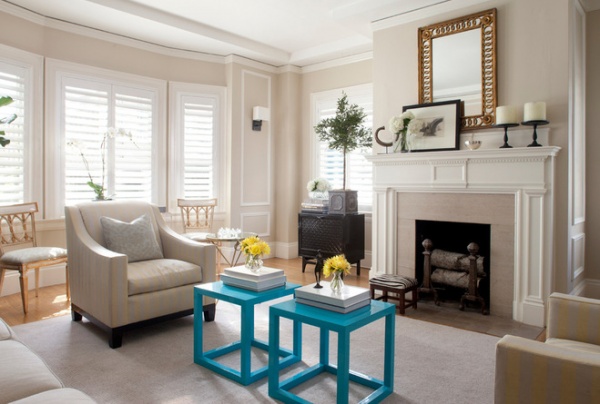
The myriad of fireplace options in the modern age may have eliminated the necessity of andirons, but Gallagher says he’s not worried that his business will dry up anytime soon. “Many people with period houses want period details,” he says. The house of Lindsay Brier, principal at Anyon Design, seen here is a good example. “And I think they add something to modern houses as well.”
Related Articles Recommended












